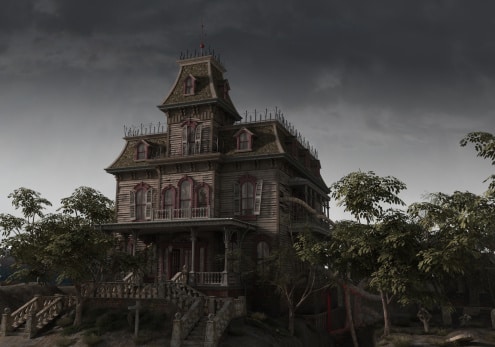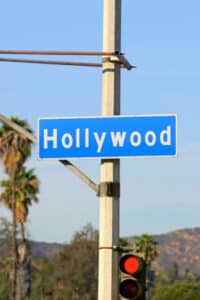American Horror Story has a cultish following. Fans of the FX series are cut from the same cloth as those who threw blue meth “candy” parties to celebrate the finale of Breaking Bad (blue cocktails, cupcakes, etc.), and the obsessive admirers of Lost who believed the secrets of death, time, and existence would be reveled if they could decipher the clues and find the relation between semantic signifiers. There’s a reason why Flann O’ Brian’s novel, The Third Policeman, was featured in the third episode of season two, right?
American Horror Story is created and produced by Ryan Murphy and Brad Falchuk. Each season is like a self-contained miniseries, with different characters, settings, storylines, and timeframes, but with some of the same actors (Jessica Lange, Zachary Quinto) showing up in different key roles.
The first season of AHS is titled “Murder House.” It takes place in 2011 and follows the Harmon family as they move into a Los Angeles mansion that’s haunted by its former occupants. The second season is tilted “Asylum” and revolves around the inhabitants of Briarcliff Manor, an institution for the criminally insane in 1960s Massachusetts. American Horror Story: “Coven” drops tonight, and if the teasers are any indication, witches are going to usurp zombies as the latest horror craze. Let’s just hope season three of AHS is more Dario Argento’s Suspiria and less Rob Zombie’s Lords of Salem.
https://www.youtube.com/watch?v=sUz62kCSRGg
Season one of AHS is a contemporary ghost story, albeit one with a man in a latex-rubber bondage suit, an emo-ghost school shooter, a nod to the 1940s unsolved Black Dahlia case, and a baby that’s destined to become the Anti-Christ. There are enough plot lines and story arcs for twenty TV shows, but Ryan Murphy holds the tone and style together without the content ever turning into parody. Is it subtle? Not at all. Is there an ADD style to the episodes instead of the slow burn of classic horror films like Rosemary’s Baby? Absolutely. But the kitschy moments (and there are many) never derail the show. Surreal, tongue-and-cheek humor goes nicely with all the murder and mayhem.
Season two of AHS, on the other hand, is too over-the-top for its own good. In a short, 13-episode season there are alien abductions, sadistic and over-sexed nuns, a tabloid serial killer named Bloody Face, Nazi doctors, human experimentation, a reinvention of the classic Ann Frank story, and social commentary on homosexuality in the 1960s. This gonzo approach is too much, and the horror and B-movie balance attained in season one collapses. “Asylum” is a caricature. Ryan Murphy turned a screamfest into a kitschfest, and if anyone remembers the plastic surgeon series Nip/Tuck, which was also created by Murphy, then you know the man isn’t shy about jumping the shark with overkill.
As content writers, these are things we need to think about: when is less really more? When does more turn into parody? If we throw everything but the kitchen sink at a piece of writing, how much of it will stick? What if we throw the kitchen sink, too? How de we balance style, tone and storytelling, especially when we have so much to say?







